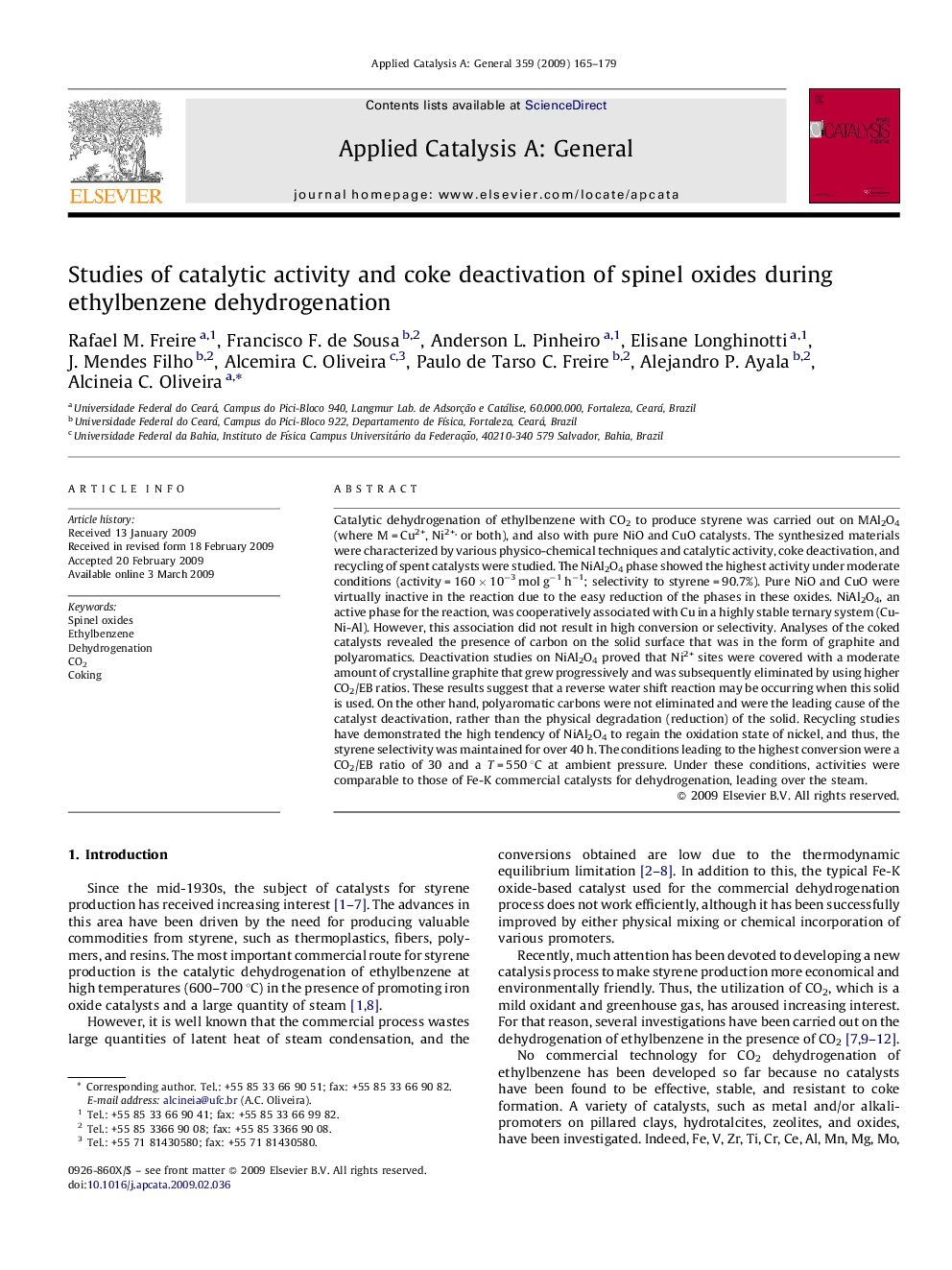| کد مقاله | کد نشریه | سال انتشار | مقاله انگلیسی | نسخه تمام متن |
|---|---|---|---|---|
| 42534 | 45929 | 2009 | 15 صفحه PDF | دانلود رایگان |

Catalytic dehydrogenation of ethylbenzene with CO2 to produce styrene was carried out on MAl2O4 (where M = Cu2+, Ni2+, or both), and also with pure NiO and CuO catalysts. The synthesized materials were characterized by various physico-chemical techniques and catalytic activity, coke deactivation, and recycling of spent catalysts were studied. The NiAl2O4 phase showed the highest activity under moderate conditions (activity = 160 × 10−3 mol g−1 h−1; selectivity to styrene = 90.7%). Pure NiO and CuO were virtually inactive in the reaction due to the easy reduction of the phases in these oxides. NiAl2O4, an active phase for the reaction, was cooperatively associated with Cu in a highly stable ternary system (Cu-Ni-Al). However, this association did not result in high conversion or selectivity. Analyses of the coked catalysts revealed the presence of carbon on the solid surface that was in the form of graphite and polyaromatics. Deactivation studies on NiAl2O4 proved that Ni2+ sites were covered with a moderate amount of crystalline graphite that grew progressively and was subsequently eliminated by using higher CO2/EB ratios. These results suggest that a reverse water shift reaction may be occurring when this solid is used. On the other hand, polyaromatic carbons were not eliminated and were the leading cause of the catalyst deactivation, rather than the physical degradation (reduction) of the solid. Recycling studies have demonstrated the high tendency of NiAl2O4 to regain the oxidation state of nickel, and thus, the styrene selectivity was maintained for over 40 h. The conditions leading to the highest conversion were a CO2/EB ratio of 30 and a T = 550 °C at ambient pressure. Under these conditions, activities were comparable to those of Fe-K commercial catalysts for dehydrogenation, leading over the steam.
Among the spinel oxides studied, NiAl2O4 showed the highest conversion in ethylbenzene dehydrogenation with CO2 to produce styrene. The causes of the deactivation, as well as the regeneration ability, are discussed based on the structure and catalytic property relationships. Deactivation and recycling studies of NiAl2O4 show that the nature of coke is closely related to the activity and styrene selectivity.Figure optionsDownload as PowerPoint slide
Journal: Applied Catalysis A: General - Volume 359, Issues 1–2, 15 May 2009, Pages 165–179